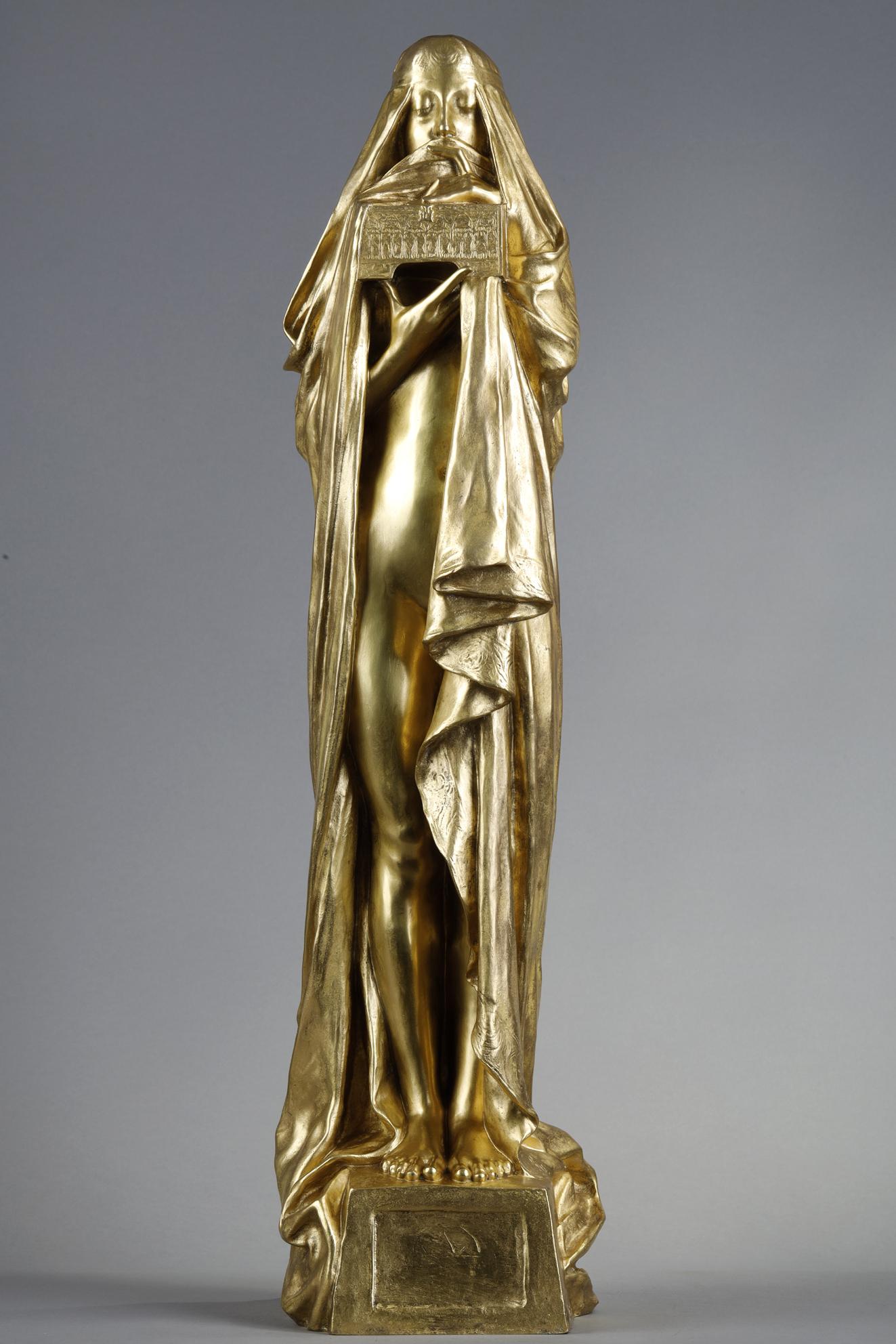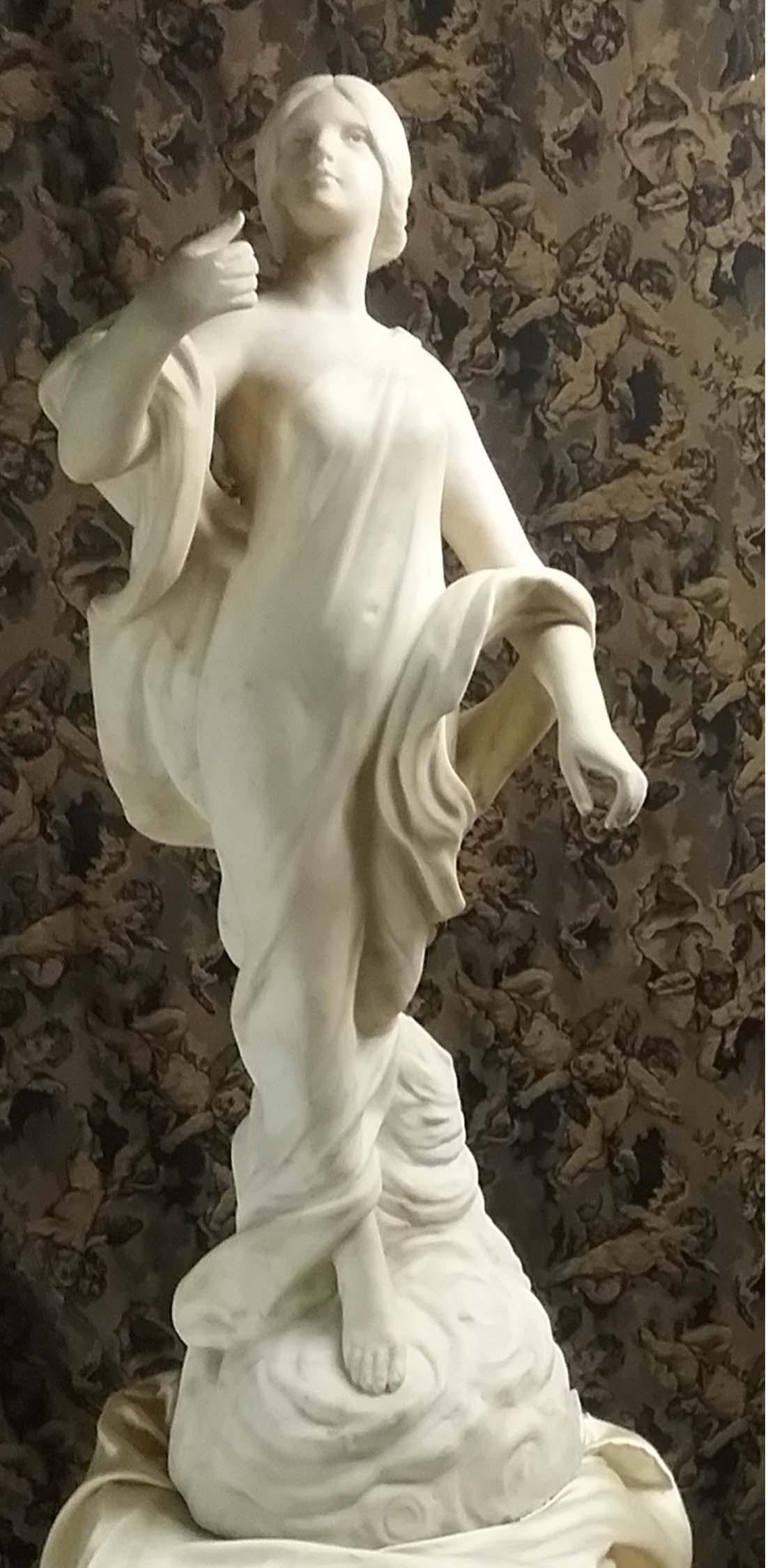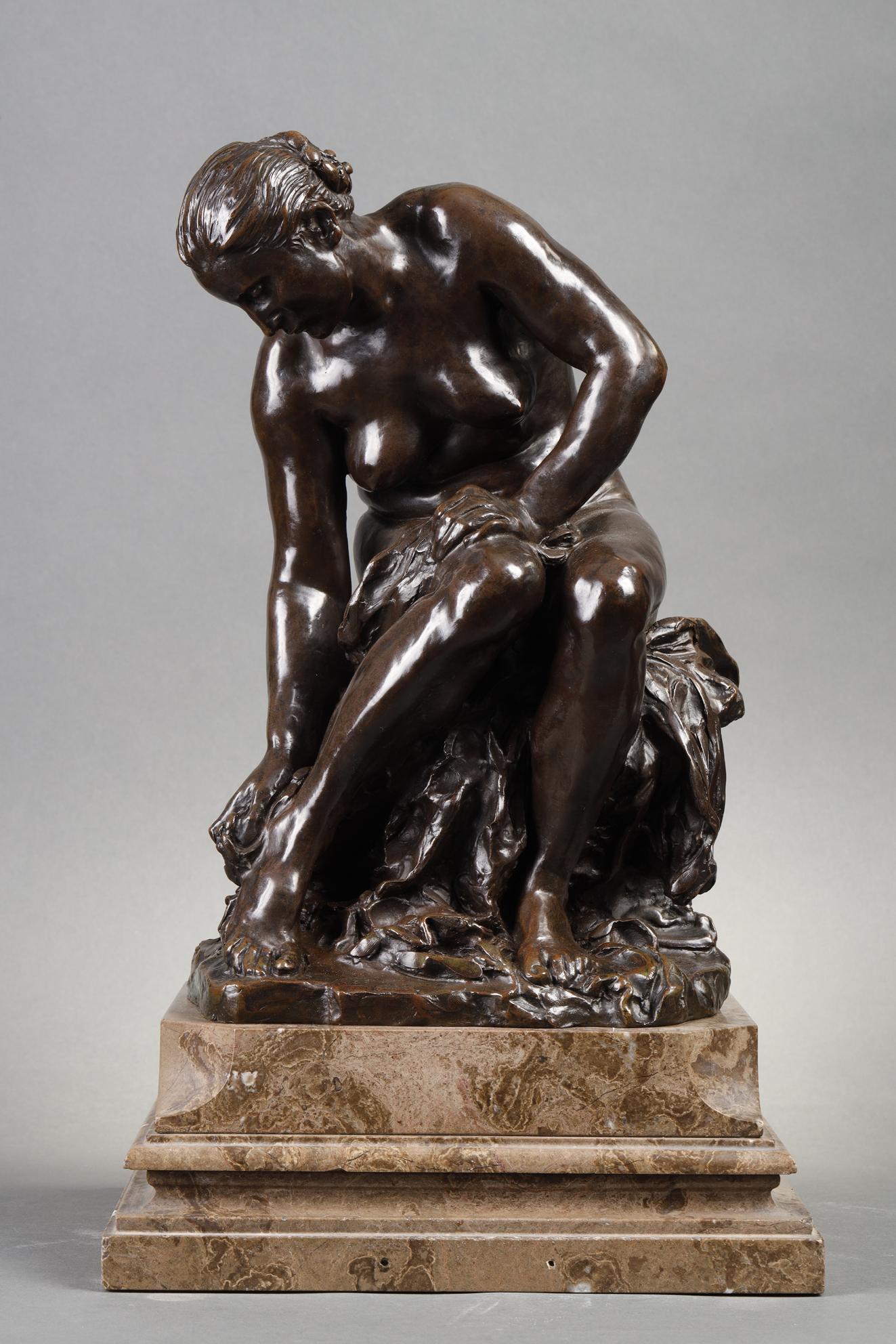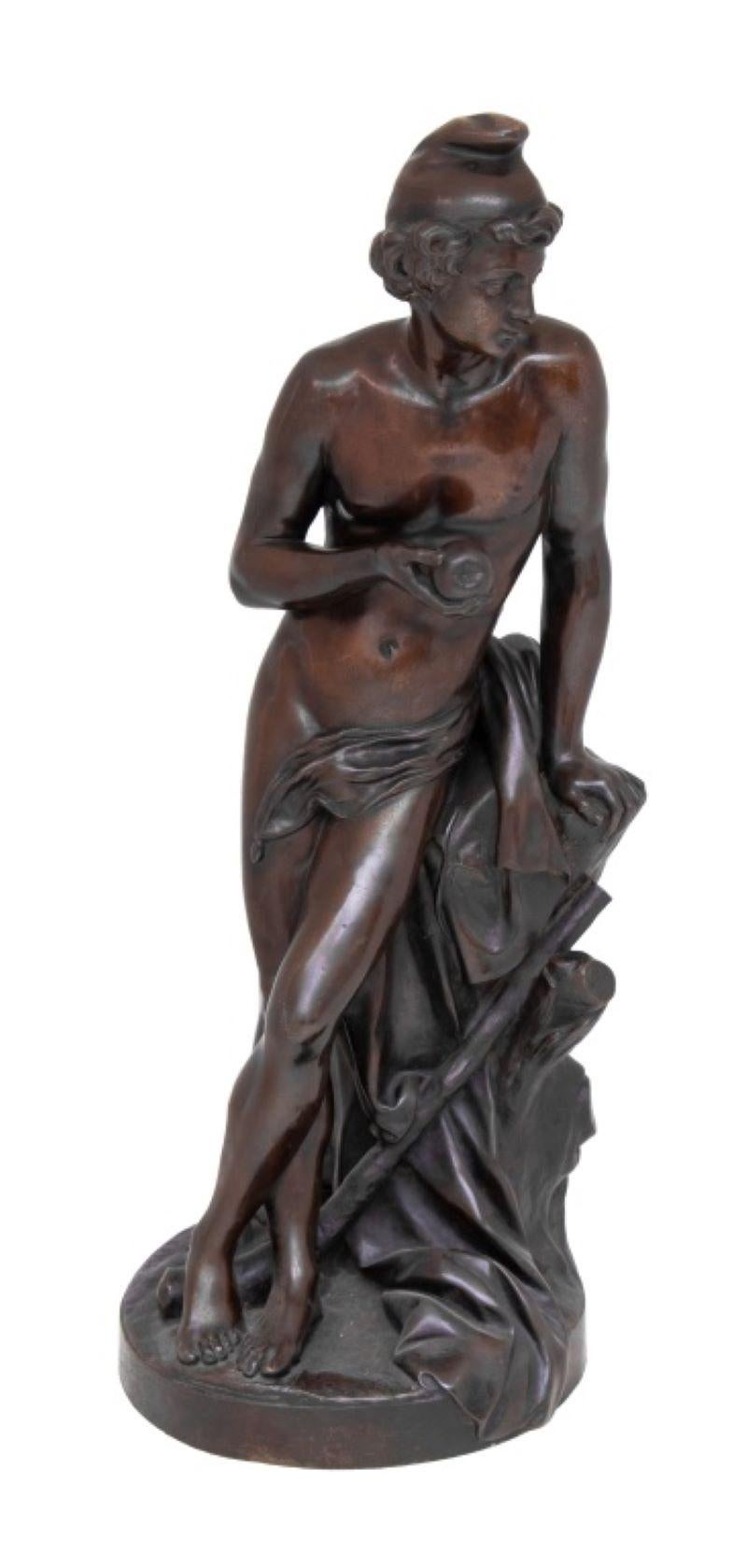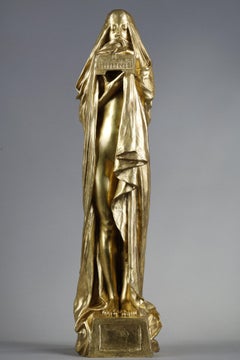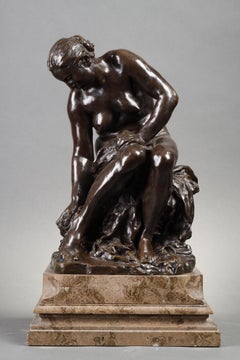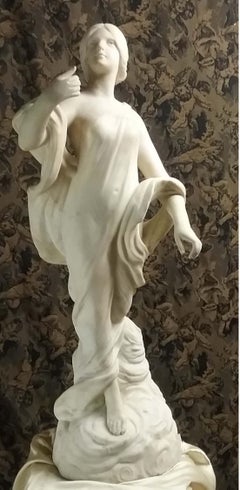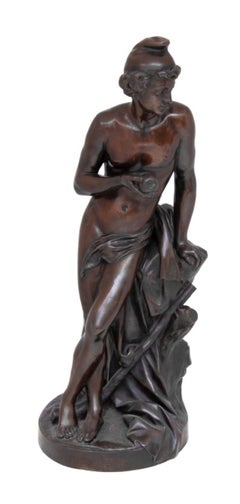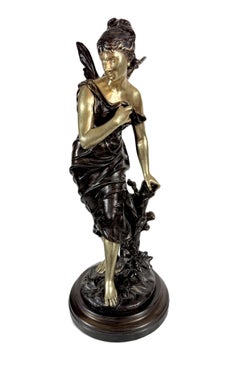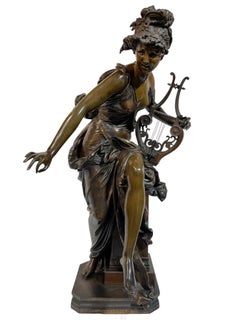Want more images or videos?
Request additional images or videos from the seller
1 of 18
Félix CharpentierThe Songcirca 1900
circa 1900
$11,534.21
£8,811.17
€9,800
CA$16,252.22
A$17,895.25
CHF 9,279.47
MX$211,929
NOK 117,796.95
SEK 110,094.60
DKK 74,658.28
About the Item
"The Song" by Félix Charpentier (1858-1924)
A very fine bronze sculpture with nuanced dark brown patina
Signed "Fx. Charpentier"
Cast by "E. Colin & Cie Paris"
France
around 1900
height 68,5 cm
In 1890, Charpentier presented two major works at the Salon of French Artists, including "La Chanson" which won the Salon prize. The plaster purchased by the French State was placed in the vestibule of the Hôtel de Ville in Paris.
In 1899, the bronze reduction was presented in the salons of the Colin company, his editor since 1897.
Biography :
Maurice Félix Charpentier (1858-1924) said Félix Charpentier was a French sculptor. First a student of the School of Fine Arts in Avignon, Félix Charpentier was admitted to the workshops of Jules Cavelier and Amédée Doublemard at the School of Fine Arts in Paris in 1877. From 1879, he presented his works at the Salon of French Artists, where he exhibited each year.
Awarded a silver medal at the Universal Exhibition of 1889, his notoriety continued to grow. Charpentier exhibited that same year at the Salon the plaster of "La Chanson", then received in 1890, the first class medal and the Salon prize for his marble sculpted after this work.
In 1893, Charpentier was awarded the medal of honor for the "Wrestlers" marble, acquired by the French State and adorning the square of the town hall of Bollène, his hometown. From that date, the French State commissioned him for several public monuments, whether for the decoration of the Gare de Lyon in Paris, or the bas-relief "Contemporary Art" for the facade of the Grand Palais in Paris.
Appointed Knight of the Legion of Honor since 1892, following the inauguration of the Centenary Monument of the annexation of Avignon and Comtat Venaissin to France, Charpentier was promoted to Officer of the Legion of Honor in 1901.
In 1899, Austria awarded Félix Charpentier the gold medal at the Vienna International Triennial Exhibition for the "Sleeping Globe". We owe him many statues kept in several national museums, such as "L'Étoile filante" (Nîmes fine arts museum). Charpentier's works also adorn many public gardens. After the First World War, he received numerous orders for war memorials.
- Creator:Félix Charpentier (1858 - 1924, French)
- Creation Year:circa 1900
- Dimensions:Height: 26.97 in (68.5 cm)Width: 11.82 in (30 cm)Depth: 9.45 in (24 cm)
- Medium:
- Movement & Style:
- Period:
- Condition:
- Gallery Location:PARIS, FR
- Reference Number:Seller: N.76531stDibs: LU2514212445752
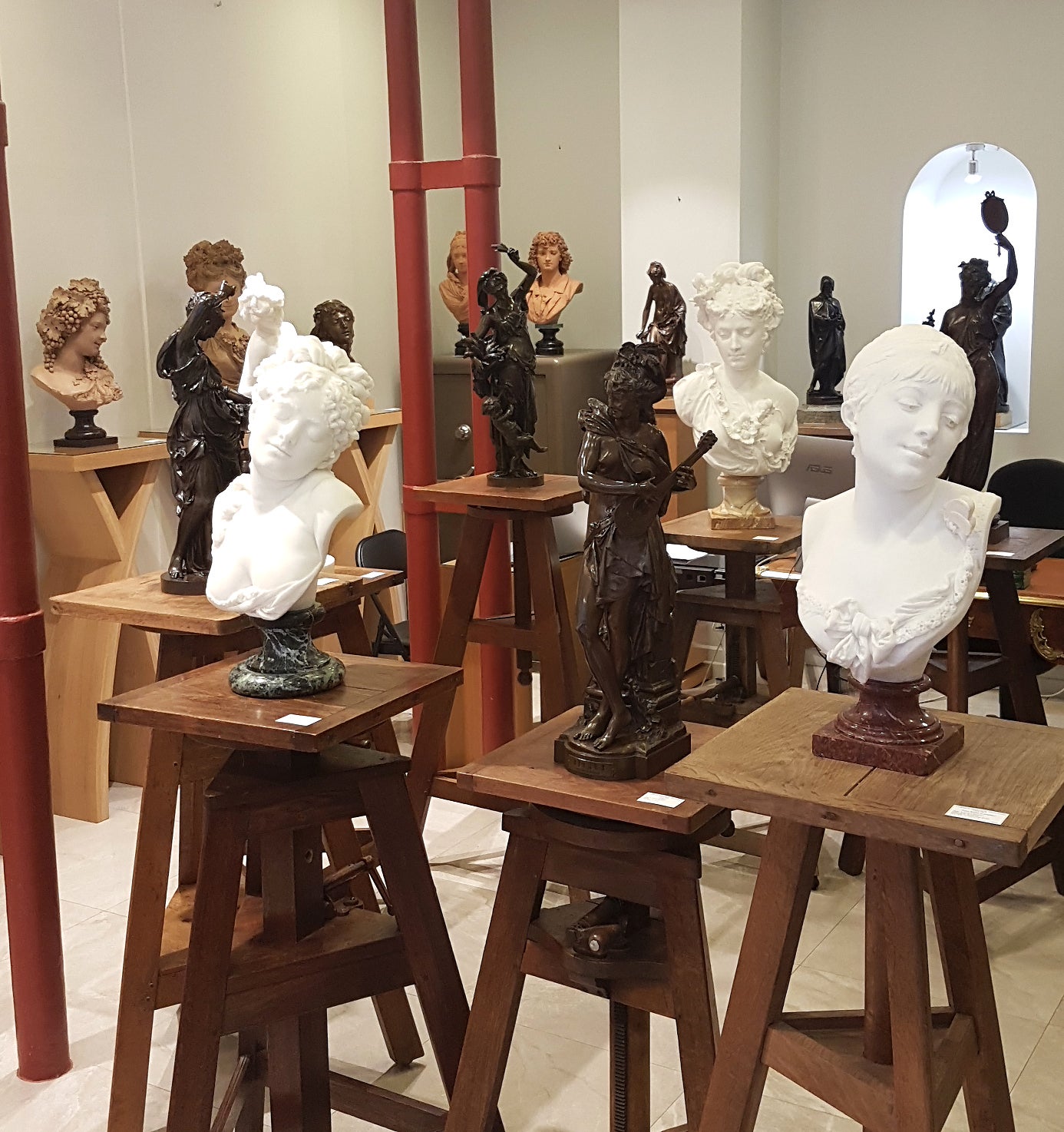
About the Seller
5.0
Recognized Seller
These prestigious sellers are industry leaders and represent the highest echelon for item quality and design.
Established in 1992
1stDibs seller since 2023
11 sales on 1stDibs
Typical response time: 12 hours
- ShippingRetrieving quote...Shipping from: PARIS, France
- Return Policy
More From This Seller
View AllThe Secret
Located in PARIS, FR
The Secret
by Pierre-Félix FIX-MASSEAU (1869-1937)
Sculpture in bronze with a gilded patina
Signed on the side " Fix-Masseau "
Cast by " Siot-Paris " (with the foundry mark)
France...
Category
Late 19th Century Art Nouveau Figurative Sculptures
Materials
Bronze
Pandora's Secret
Located in PARIS, FR
Pandora's Secret
by Maurice BOUVAL (1863-1916)
Sculpture made in bronze with a nuanced dual patina, light –and dark brown
signed on the base " M. Bouval "
old edition cast
presente...
Category
Early 1900s Art Nouveau Nude Sculptures
Materials
Bronze
Suzanne
By Aimé-Jules Dalou
Located in PARIS, FR
Bathing woman drying her right foot
also known as "Suzanne"
by Aimé-Jules DALOU (1838-1902)
A bronze sculpture with a nuanced dark brown patina
Signed on the base " Dalou "
A very...
Category
Early 20th Century French School Figurative Sculptures
Materials
Bronze
Caress of Love
By Albert-Ernest Carrier-Belleuse
Located in PARIS, FR
"Caress of Love"
by Albert-Ernest CARRIER-BELLEUSE (1824-1887)
Bronze group sculpture with a nuanced dark brown patina
Signed on the back "A. Carrier-Belleuse"
Reposing on its orig...
Category
1870s French School Figurative Sculptures
Materials
Bronze
Allegory of Progress
By Louis Chalon
Located in PARIS, FR
Allegory of Progress
by Louis CHALON (1866-1940)
Bronze with dual patina
Raised on a yellow Siena marble base
Signed on the side of the base " L. Chalon "
Old period cast
France
ci...
Category
Early 1900s Art Nouveau Figurative Sculptures
Materials
Bronze
The Birth of Venus
By Albert-Ernest Carrier-Belleuse 1
Located in PARIS, FR
The Birth of Venus
by Albert-Ernest CARRIER-BELLEUSE (1824-1887)
Bronze sculpture with nuanced dark brown patina
signed "A. Carrier-Belleuse"
cast by Denière
France
circa 1870
he...
Category
Late 19th Century French School Figurative Sculptures
Materials
Bronze
You May Also Like
Inspiration
Located in Los Angeles, CA
Beautiful Art Nouveau marble.
Campagne, Pierre Étienne Daniel French , 19th century , male. Active in Paris. Born 1851 , in Gontaud (Lot-et-Garonne). S...
Category
1890s Art Nouveau Figurative Sculptures
Materials
Marble
Émile Louis Picault Bronze Sculpture
By Émile Louis Picault
Located in Astoria, NY
Emile Louis Picault (French, 1833-1915) "Paris" Patinated Bronze Sculpture, late 19th century, the standing figure holding a golden apple, signed to base. 32" H x 12" W x 12" D. The ...
Category
Late 19th Century Art Nouveau Figurative Sculptures
Materials
Bronze
Eutrope Bouret (1833-1906) Psyché
By Eutrope Bouret
Located in Berlin, DE
Eutrope Bouret Bronze
Spyche
Eutrope Bouret (French, 1833-1906)
Late 19th century.
Signed on the base
Bouret (French, 1833–1906) was an important 19...
Category
19th Century Jugendstil Figurative Sculptures
Materials
Bronze
Albert Ernest Carrier-Belleuse A Figural Bronze Sculpture Melodie
By Albert-Ernest Carrier-Belleuse
Located in New York, NY
Albert-Ernest Carrier-Belleuse (1824 - 1887)
Female Figural Bronze Sculpture Melodie (Melody)
A young lady with a lyre in bronze with a dark green patina
19th Century
31" H x ...
Category
19th Century Figurative Sculptures
Materials
Bronze
La Cothurne
By Agathon Léonard
Located in Missouri, MO
"La Cothurne" 1901
Gilt Bronze
Approx 21.5" High (to raised hand)
Signed and Dated
Foundry Mark "Susse Freres"
Originally modeled in white biscuit porcelain this Greek dancer is a from a set of eight created for a dining table. They were immediately successful when they were exhibited in the Sevres pavilion at the 1900 Exhibition. Individual figures could be ordered and "La Cothurne" proved the most popular. Their success led to the firm of Susse buying the right to cast versions in metal.
Agathon Leonard (1841-1923) is one of the well-known French Art Nouveau sculptors. Born in Lille in 1841, he first studied there before moving to Paris where he studied at the Ecole des Beaux Arts under Eugene Delaplanche.
He gained recognition at the annual Expositiones Universelles, winning a Silver Medal there in 1889 and gold in 1900. His most important piece, Jeu L'echarpe, was the best known series of Sevres production at the turn of the century and sold out at the 1900 Expo in Paris and later was given as a gift by the French Gov't to Nicholas II at the Hermitage.
His bronzes were cast at the Susse Freres Editeurs Foundry. He worked also in marble, quartz and ivory. He also produced Art Nouveau medallions...
Category
Early 1900s Art Nouveau Figurative Sculptures
Materials
Bronze
Price Upon Request
Large French Art Nouveau Patinated Terracotta Sculpture Signed
Located in Pistoia, IT
Luca Madrassi (1848-1919), large patinated terracotta sculpture in Art Nouveau style, late 19th century. The sculpture depicts a half-naked young woman sitting in a tree holding a m...
Category
Late 19th Century Art Nouveau Figurative Sculptures
Materials
Terracotta
More Ways To Browse
Vestibule Antique
Hotel De Paris
Antique Wrestling
Marble Wrestling
Lolly Pop
Marshall Fredericks
Martin Eichinger
Matteo Mauro
Maurice Duchin
Mr Imagination
Nude Fun
Nureyev Bronze
Outdoor Pop Art Sculptures
Picasso Terracotta Tile
Pop Art Sculpture Figures
Rachel Ann Stevenson
Richard Macdonald Allonge
Richard Macdonald Elena
